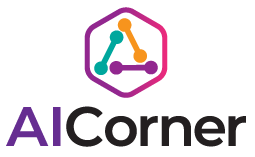The field of education has significantly changed over the years, thanks to artificial intelligence (AI). The good news is, that AI in education today means that the manner we educate and study it is becoming replaced with exciting new ways of personalized mastering experiences and adaptive curricula. While this post directly aims to review how AI is affecting education, particularly its vision of personalized learning and adaptive curricula (and the opportunity costs vs. challenges resulting from it),
The Promise of AI in Education
Ayanna Howard: One of the biggest problems that we have in education today is just resources and knowledge base, right? Like for example if you are living someplace which does not a lot have access to very good teachers or they do not know all of these things. It is difficult for traditional educational models to meet the needs of individual students who learn differently and at different paces. AI-driven solutions offer a way to personalize learning experiences for every student which in turn could help improve the overall results and participation while solving some of this challenge.
Personalized Learning
One of the most important aspects of this AI can be clearly understood with its input concerning personalized learning. Artificial intelligence algorithms are capable of processing a vast amount of data including academic performance, study behavior, and preferences gained from a student’s digital trail to build personalized learning pathways. This approach allows for:
Personalized pacing: Students can absorb content at their own pace, neither getting ahead nor falling behind.
Customizing content: AI can suggest specific resources, problems, or explanations according to the strengths and weaknesses of a student.
Instant feedback: Instant, personalized feedback gives students a clearer and better sense of their mistakes so they can correct them more effectively.
Keep a student engaged by discovering the type of content or activities that keep them most motivated and interested in learning – (Engagement optimization)
Adaptive Curricula
Not only is AI facilitating personalization at the individual level, but it has even led to adaptive curricula that can change as a student keeps pace with new coursework and develops over time. This includes:
Real-time content refreshes: The curriculum can undergo automated updates reflecting the most recent information and research, to avoid outdated knowledge for students.
Identify skill gaps: Analyze performance data from broad groups of kids to know what the common skills are that need attention and respond naturally to changing curricula.
Improved interdisciplinary connections: High-level AI can easily recognize links among various subjects, ultimately enabling more comprehensive and at an early stage of development learning.
Predictive analytics: With AI examining student performance patterns, educators could predict and respond to potential learning gaps well before they become a problem.
Implementation and Challenges
Though the opportunities for AI in education are large, there is a political economy to deploying these technologies:
Data Privacy and Security
To do that, the process of analyzing the vast amounts of student data involved in AI education is needed. The most important is to keep in mind that patient data needs privacy and security overall. Not only educational institutions but also technology providers have to provide high-level assurance and relieve their customers from a legal burden relevant to this regulation.
Equity and Access
If not careful, we could end up creating a new inequity in education as AI comes into play. Empowering the use of AI updates in education should be fair and not cause disparities based on socioeconomic background.
Teacher Training and Support
Teachers Require Proper Training and Support to Integrate AI into Education Note that this goes beyond a technical understanding of AI tools and provides instruction regarding how to leverage insights derived from AI as input into teaching methods.
Ethical Considerations
Even as AI is making headway in education, how it should be applied ethically continues to loom over the horizon. These questions would include matters of algorithmic bias, the place for human judgment in educational decision-making, and implications upon student autonomy and creativity.
The Future of AI in Education
However, despite these challenges, AI holds great potential for the future. We will see increasing changes with the technology, with:
The degree to which personalization is sophisticated: AI will only get better at being able to sense and cater in more precise ways to individual needs, and the structure of differentiating instruction may shift fundamentally.
AI + human educators working together: AI is more likely to enhance than replace teachers, freeing them up to do higher-order teaching tasks and student support.
AI could also be used for learning beyond formal education settings, supporting lifelong continuous learning and skill development.
Worldwide knowledge exchange: AIs might be employed to share educational resources, and best practices on a worldwide scale across various learning cultures and standardized education systems, thus promoting global training.
Conclusion
The incorporation of AI in education, most prominently with regards to customization learning and autonomous curricula is a huge underdevelopment in the teaching conta approach. There are also many opportunities for improved learning outcomes, increased engagement, and more equitable access to quality education.
We cannot say for certain what the future of AI in education will look like, but one thing is clear: Teachers, policymakers, and technology developers must collaborate to ensure that they leverage it wisely. In this way, we can reimagine a learning ecosystem that serves each learner in ways that stretch and nurture them for success as flourishing citizens within an increasingly complex world moving at lightning speed.

